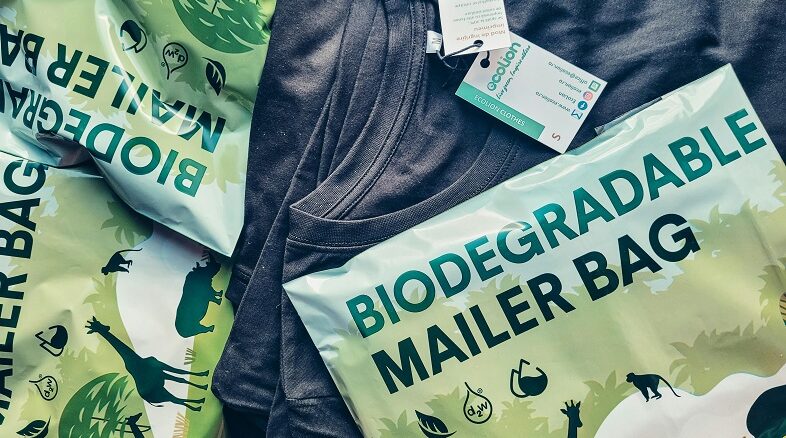
Explore the benefits, examples, and best practices for using biodegradable packaging for e-commerce to reduce waste and boost brand reputation
Introduction: Why Biodegradable Packaging for E-commerce Matters
With the surge in online shopping, the e-commerce industry has experienced explosive growth—but so has packaging waste. As sustainability becomes a central concern for modern consumers, brands are shifting toward biodegradable packaging for e-commerce to reduce environmental impact and build trust. This move not only helps combat plastic pollution but also aligns businesses with eco-conscious values.
What Is Biodegradable Packaging?
Biodegradable packaging is made from materials that naturally decompose over time through biological processes, without leaving harmful residues behind. Unlike traditional plastic packaging, which can take centuries to break down, biodegradable materials return to the earth in a matter of months under the right conditions. These materials often include:
Cornstarch
Bagasse (sugarcane fiber)
Mushroom mycelium
Bioplastics like PLA
Recycled kraft paper
Biodegradable packaging is both functional and eco-friendly—ideal for brands looking to reduce their carbon footprint.
What Is E-commerce Packaging?
E-commerce packaging refers to the materials and methods used to protect and deliver goods purchased online. It includes:
Shipping boxes
Mailer bags
Bubble wrap and fillers
Product containers
Labels and sealing tape
The purpose of e-commerce packaging is twofold: to protect the product during transit and to provide a positive brand experience during unboxing. With growing consumer concern about excess packaging and plastic waste, biodegradable packaging for e-commerce has emerged as a preferred solution.
What Are Some Examples of Biodegradable Packaging?
There are many forms of biodegradable packaging used in e-commerce today. Some common examples include:
Compostable mailer bags made from cornstarch or PLA
Recycled kraft paper boxes that decompose naturally
Biodegradable bubble wrap crafted from recycled or compostable polymers
Mushroom packaging molded to fit products and home-compostable
Paper fillers or shredded cardboard used as void fill instead of foam peanuts
Compostable shipping labels and tapes made with plant-based adhesives
Each of these options plays a vital role in reducing landfill waste and minimizing plastic dependency.
What Is the Best Biodegradable Packaging?
The best biodegradable packaging depends on the nature of your products and your sustainability goals. For instance:
For lightweight products: Cornstarch-based mailers or kraft paper envelopes
For fragile goods: Mushroom packaging or biodegradable foam inserts
For food items: PLA containers or bagasse-based boxes
For premium branding: Custom-printed recycled boxes with soy-based inks
Ultimately, the best solution is one that combines durability, compostability, and a positive customer experience. Also, always look for certifications like BPI (Biodegradable Products Institute) or ASTM D6400 to ensure true biodegradability.
Benefits of Biodegradable Packaging for E-commerce Businesses
1. Eco-Friendly Brand Perception
Today’s consumers want to buy from brands that care about the planet. Using biodegradable packaging for e-commerce helps you build trust and loyalty.
2. Regulatory Readiness
Countries are beginning to restrict single-use plastics. Sustainable packaging prepares you for evolving regulations.
3. Customer Satisfaction and Unboxing Experience
Eco-friendly packaging not only protects products but enhances brand presentation and customer delight.
4. Waste Reduction and Sustainability Goals
Switching to biodegradable options helps your business reduce landfill contributions and meet green targets.
Popular Biodegradable Packaging Types for E-commerce
Compostable Mailers
Made from cornstarch or PLA, these offer lightweight, moisture-resistant protection and break down within 90–180 days in commercial composters.
Corrugated Kraft Boxes
Strong, recyclable, and biodegradable—perfect for heavy goods or branded packaging.
Biodegradable Bubble Wrap
Eco-alternatives to plastic bubble wrap that degrade in months, not centuries.
Mushroom-Based Packaging
Custom-molded to fit your product and home compostable within weeks.
Recyclable Filler Material
Shredded paper, starch peanuts, or cardboard crinkle fill provide effective void fill and cushioning.
Tips for Transitioning to Biodegradable Packaging
Start with Core Products: Introduce biodegradable packaging gradually, starting with your most shipped items.
Audit Current Waste: Identify where single-use plastic is used and find eco-friendly substitutes.
Communicate the Change: Add messaging to your packaging or site that informs customers how to recycle or compost it.
Partner with Sustainable Suppliers: Work with vendors specializing in biodegradable and compostable materials.
Challenges and Solutions
Higher Cost: Eco-materials may cost more upfront but offer long-term brand value and waste savings.
Performance Concerns: Choose certified, tested materials to ensure durability.
Customer Confusion: Educate users on proper disposal through packaging inserts or digital guides.
Future Trends in Biodegradable E-commerce Packaging
Smart Packaging with QR codes linking to disposal instructions
Edible and algae-based films
Reusable biodegradable bags and inserts
AI-optimized packaging sizing to minimize waste
These innovations promise to take biodegradable packaging for e-commerce to the next level in both efficiency and eco-responsibility.
Conclusion: Make the Shift to Biodegradable Packaging for E-commerce
In a world where sustainability is no longer optional, biodegradable packaging for e-commerce offers a smart, ethical, and future-ready solution. By switching to earth-friendly materials, brands not only reduce their environmental impact but also resonate with customers who value conscious consumption. Whether you sell clothing, electronics, or skincare, biodegradable packaging is a practical way to align profits with purpose.

